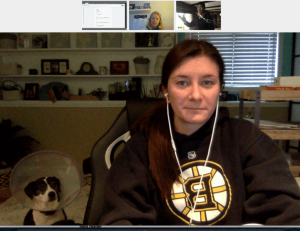— February 7, 2018

Recent research indicates that people continue to be unsure about Appearance in the workplace. Is it important, or not? What’s appropriate, or inappropriate? What about decoding dress codes? How should aspiring women dress? These are only a few of the many questions that keep cropping up.
There’s no question that Appearance impacts life in the corporate world. To set the record straight, in the coming weeks we’re going to address the issues that continue to puzzle people. If you have a quandary, chances are you’re not alone.
The jury is still out on whether an always-on “business formal” dress code produces greater performance than a casual code. Most experts, cautiously weighing in on the subject, say it’s all about the industry – and the occasion. For big-city law firms, it’s strictly suits and ties. On the other hand, a high-profile international design firm would probably opt for greater freedom of choice.
Four categories of business attire
1. Business formal
Think Boardroom: Dark suits, understated shirts and restrained ties, de rigueur for men, typically worn with oxfords.
Conservative skirt or pantsuits for women.
2. Smart
This is a slightly relaxed form of its more formal cousin: For men, jackets and ties but with less rigid observance of the strict formal rules, including slip-ons or loafers.
Separates, not necessarily suits, for women.
3. Business casual
This is tricky – for some organizations it means men wear a jacket and no tie, while for others, it’s understood that jackets are optional. Depending on the culture and a person’s level of seniority, ties are often worn.
For women, again separates with many women choosing tailored trousers over skirts.
4. Casual
This is even trickier! Typically, casual means ties-off for men, and sometimes khakis and polos.
More relaxed separates for women.
Denim is usually not part of the equation, along with tee shirts, athletic shoes and sandals.
The Bottom line
No matter what the dress code is, meticulous, impeccable grooming is essential, at every organizational level. Run-down but comfortable shoes, untidy hair, too much makeup, too much skin showing, soiled clothing – these are serious infractions, impossible to overlook.
Dress like a leader
Although North America has experienced a shift to far more relaxed dress codes across many corporate sectors, this translates into more options – and more confusion. Making the right choices is critical.
Successful leaders who experience career trajectory understand they should “dress for the job you want, not for the job you have.” This holds true despite relaxed dress codes.
Business & Finance Articles on Business 2 Community
(40)









